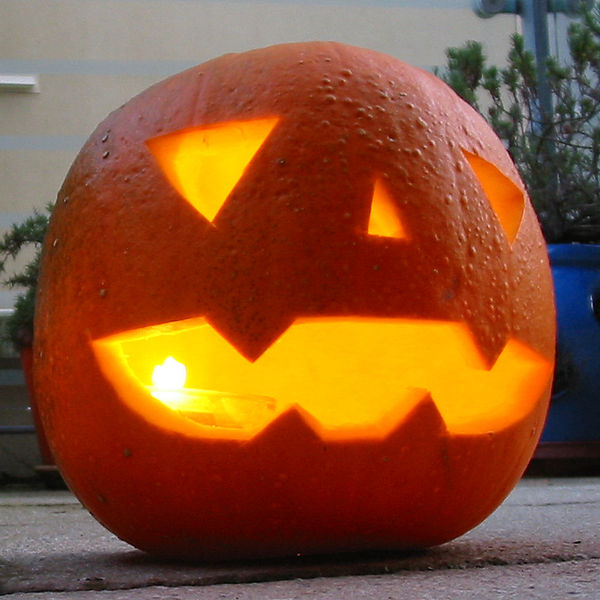By Aileen Marshall

Halloween is coming up at the end of this month on October 31st. It has become a very big holiday in this country, for children as well as adults, and it is growing in other countries. How did Halloween get started?
The holiday we know today is actually a combination of a pagan harvest festival and a Christian holy day to honor the dead. It actually started in Ireland in medieval times as a harvest festival called Samhain (pronounced so win). Samhain in Gaelic means “summer’s end.” It was the end of the Celtic calendar, the start of the “dark half of the year.” It coincided with the end of the growing season, with the crops dying off and days getting shorter. The ancient Celts believed it was a day the deads’ spirits could return to earth and visit their relatives or on which evil spirits possess someone. Wearing costumes was a way of fooling ghosts and demons. People would also light bonfires and carve out a turnip and put a candle in it as a means of keeping evils sprits away. There is an ancient Irish folktale of a man named Jack who tricked the devil, and trapped him in one of those carved turnips. The devil eventually got out and cursed Jack to wander the earth every Halloween carrying his lantern. Hence the term “jack o’ lantern” or Jack of the lantern. It was also common to have games of fortune telling. One game was to peel an apple so the skin came off in one piece and throw the peel over one’s shoulder. It was said the peel would form the first letter of the person he or she would marry. In England and Scotland people would go “guising,” visiting friends in costume and asking for food or coins.
Then, in the early Middle Ages, Christianity started to take a hold on the Irish population. The church, at the time, decided it would be wise to place the holy day of All Souls Day, a day to pray for the souls of the deceased, near Samhain, since the holidays were similar. The word Halloween is a contraction of All Hallows Even (All Saints’ Eve).
Halloween wasn’t a big holiday in this country until the wave of Irish immigrants came during the potato famine of 1846, when it became very popular both here and in Canada. The custom of trick or treating became more mainstream around the 1920s. This is the tradition of children going door to door in costume saying ‘trick or treat?” The meaning is that if they don’t get candy, there will be a trick. In more recent years, the practice of “Mischief Night” has grown. This is the night before Halloween when teenagers will throw eggs at a house “egging” or strew toilet paper across a person’s lawn and shrubbery “tp-ing” a house. It was also very popular to have Halloween parties with games such as “bobbing for apples,” where one has to pick up an apple from a tub of water using only one’s teeth. In Scotland this game is called dooking, a derivative of the word dunking. In more recent years, it has become common to have community celebrations such as parades. The biggest one is right here in our own city, the Village Halloween Parade. It attracts thousands of tourists and has been likened to Mardi Gras in New Orleans. Parade participants and spectators alike walk down the street in very elaborate and creative costumes. It is televised nationwide. Other cities also have Halloween parades such as Madison, Wisconsin; Chapel Hill, North Carolina; and Keene, New Hampshire.
Halloween, or something similar, is celebrated in other countries as well. In many European countries it is celebrated much the way it is in the Celtic Isles. And it’s also traditional to visit and decorate the graves of relatives. In Romania, Halloween centers on the story of Dracula, and there are reenactments of witch trials believed to have happened there. In China a holiday called Yue Lan (Hungry Ghost) falls in the autumn when people make shrines to their deceased relatives. Tokyo Disneyland, Hong Kong Disneyland and Univer- sal Studios Singapore have been having Halloween celebrations in recent years. Mexico has Dia de los Muertos (Day of the Dead) to honor one’s deceased relatives. People will create a shrine for their loved ones and go to the cemetery to clean and decorate their graves. There are also masks and candies, sometimes in the shape of skulls. Halloween has become prevalent lately in India and many South American countries because of the depiction of Halloween in movies and television shows.
The Graduate Student Council has an annual Halloween party in the Faculty Club. The costumes can be quite interesting to see. This year it will be held on November 1 beginning at 7 pm.
October 2013
